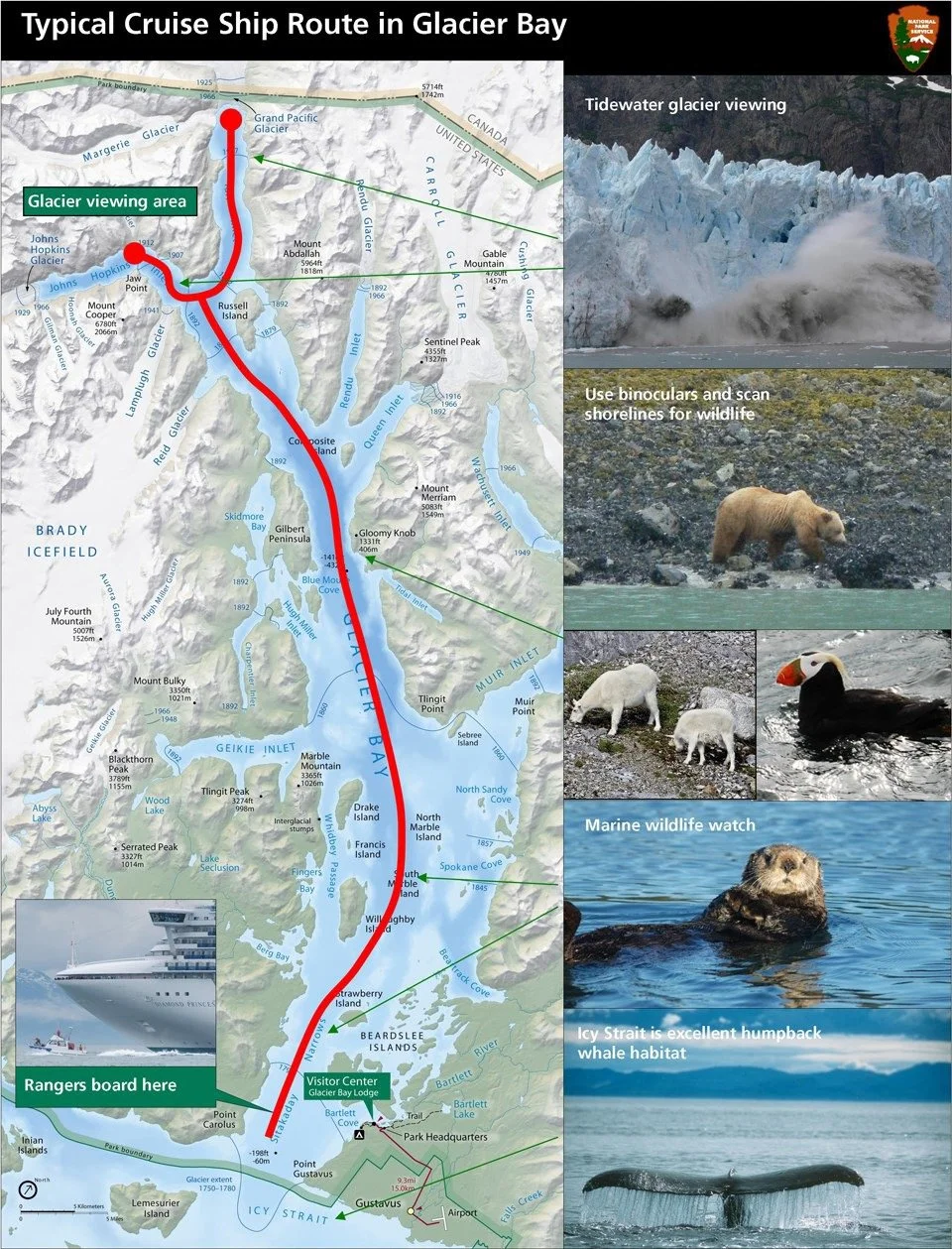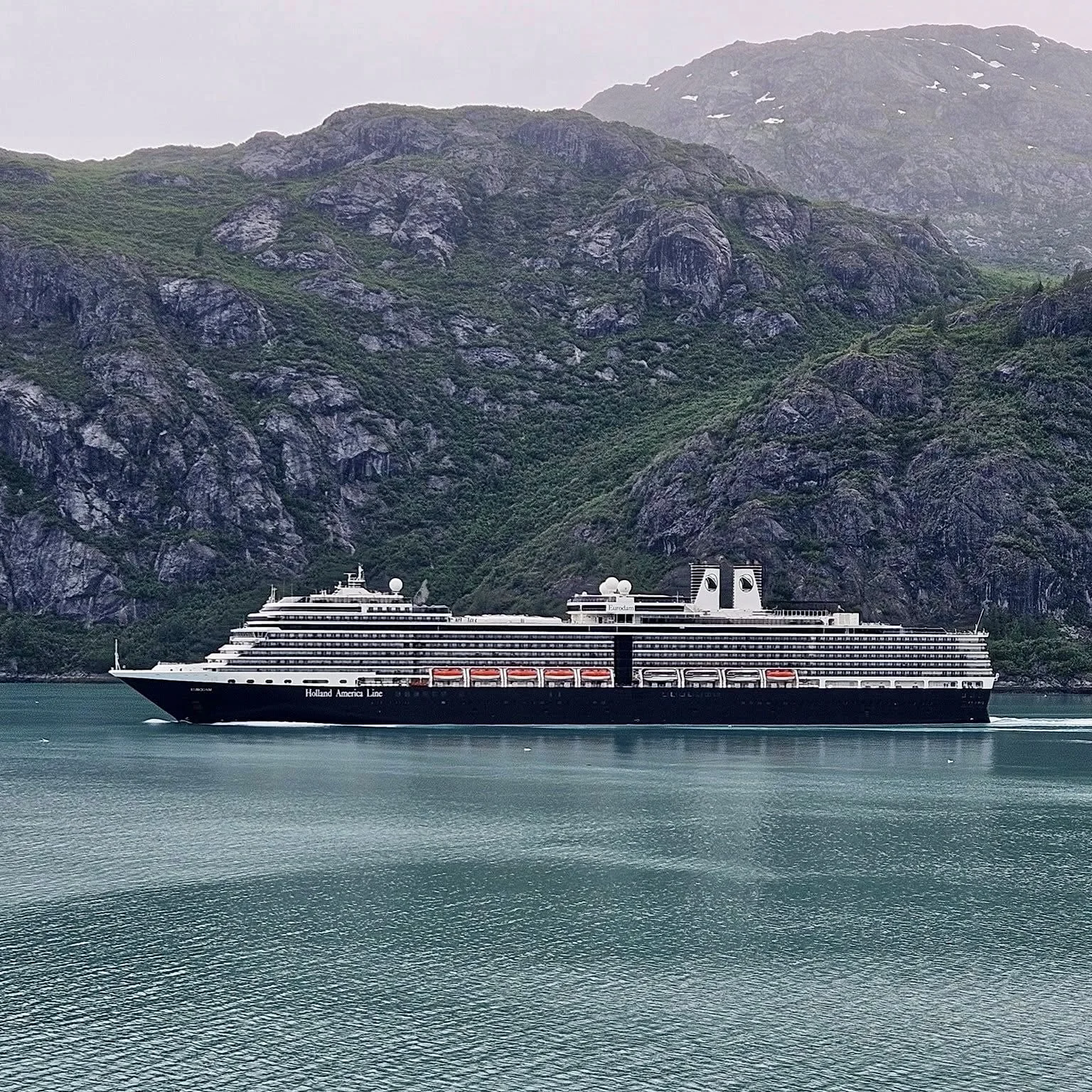Glacier Bay
In 2008, we visited the Perito Moreno Glacier in Argentine Patagonia, and it was amazing. So seeing more glaciers was not a big priority for Steve and me. But we’d never been to Alaska, and Alaska has more glaciers than the rest of the world combined. There are 19,400+ named/studied glaciers in Alaska, covering about 23,000 square miles. That is a LOT of ice! By taking an Alaska cruise, we could visit a new state AND a new national park. (And my mom finally checked “Alaska cruise” off her bucket list.)
It had been sunny in Juneau the previous day, but when the ship reached Glacier Bay National Park, skies were gray. It didn’t matter; visibility was good, and (we were told) the glacial ice would look more blue.
We entered the bay at about 6:00am, and National Park Rangers boarded our ship. Their boat came alongside the Eurodam, and they climbed a rope ladder while both boats were moving. Now that’s an exciting commute! We would be in Glacier Bay for around nine hours. The ship would travel 65 miles to the northern end of the bay, stop for a while to view the glaciers there, and then cruise back out.
Source: nps.gov/glba
Steve rose early and went to the upper decks for some whale watching. He spotted more than a dozen humpback whales! He helped me spot a few whales from our balcony. I could just make out the spouts and tails in the distance.
Glacier Bay is aptly named - there are about 1,000 glaciers there! But only a small fraction of them are visible from the ship. In the lower part of the bay, we saw several “hanging” glaciers on and between the mountains.
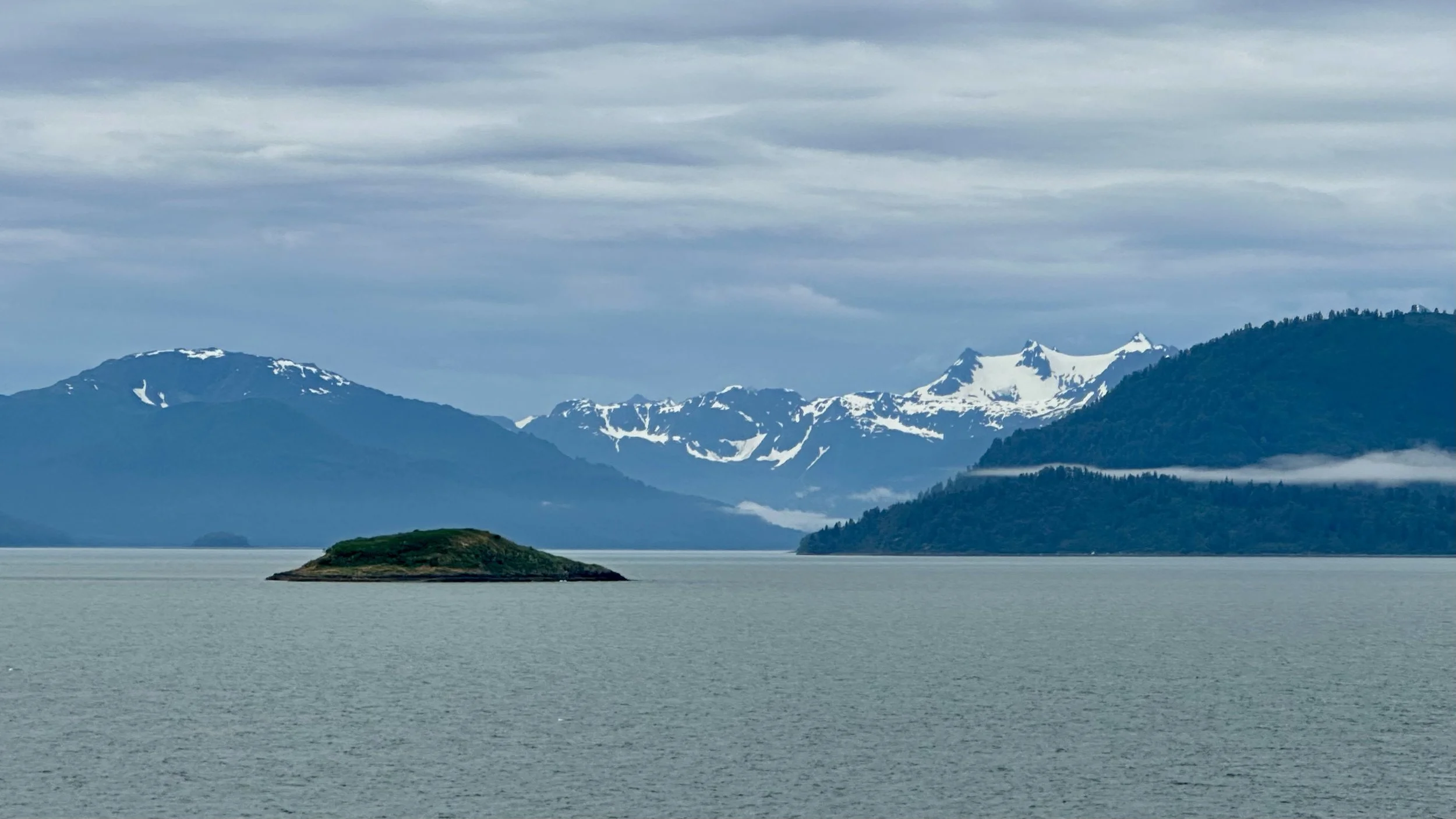

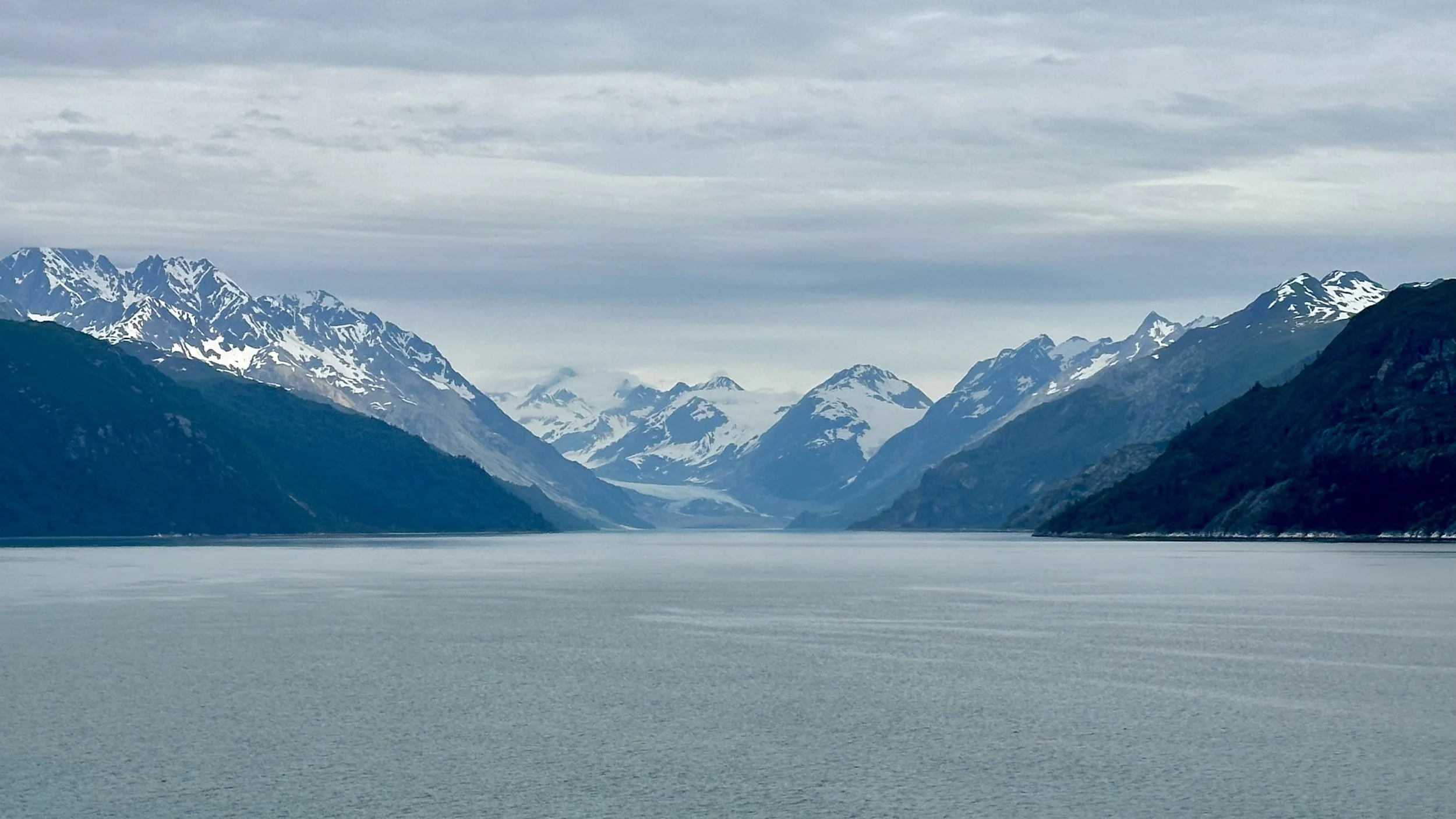
It was wonderful to have our own private balcony, sheltered from the wind, with unobstructed views of the glaciers. It even connected to Mom and Jan’s balcony next door. Our staterooms had plenty of warm blankets, and Mom even took a little nap outside.
The ship’s bow was open, right near our stateroom, and the view from there was even more stunning. It was about 50℉ outside, but the wind made it feel much colder. So Steve and I alternated between our balcony and the bow. We could hear the park rangers’ commentary on the bow and on our stateroom television. At 10am, hot pea soup was served out on the bow (a Holland America tradition).
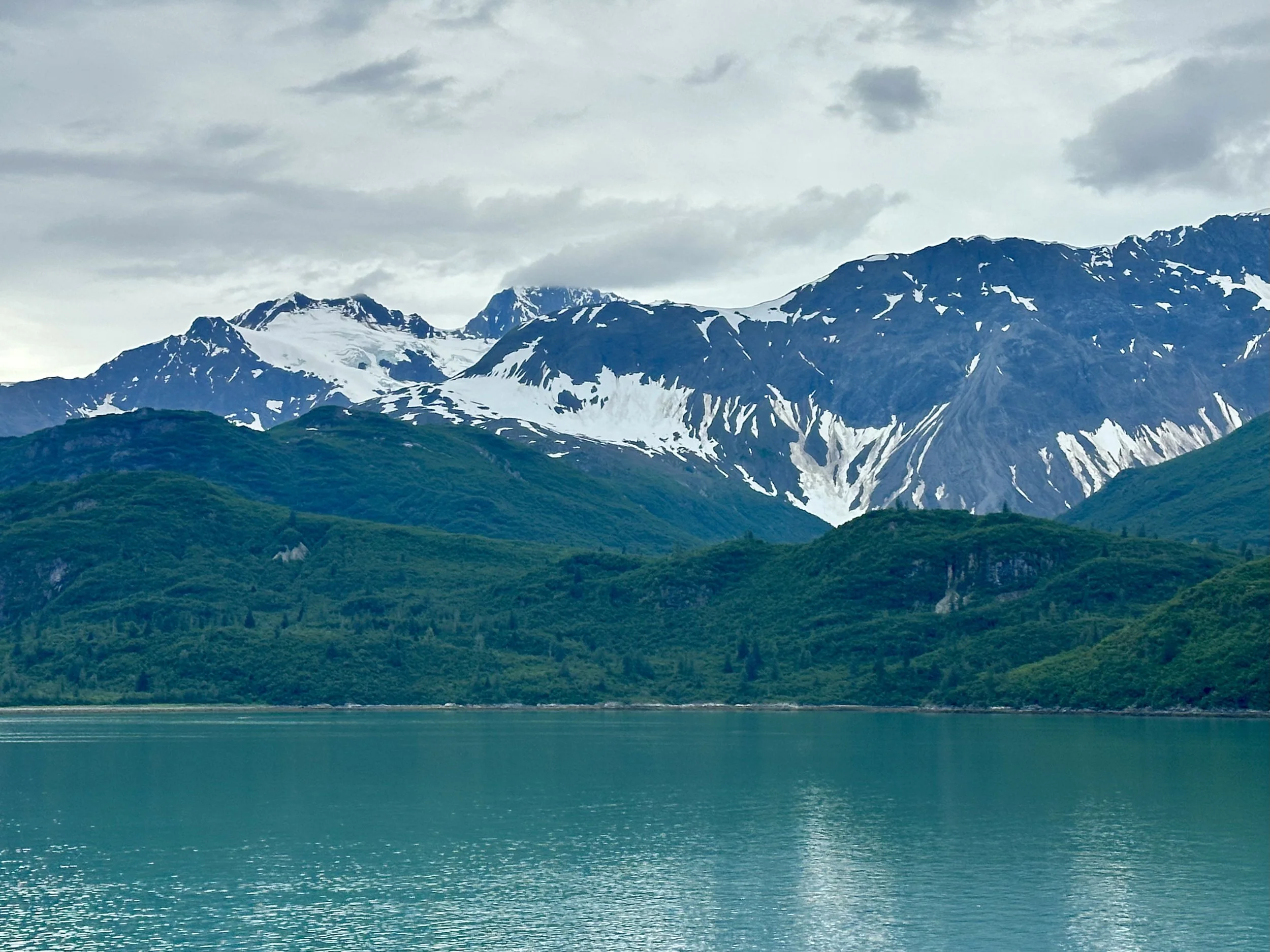


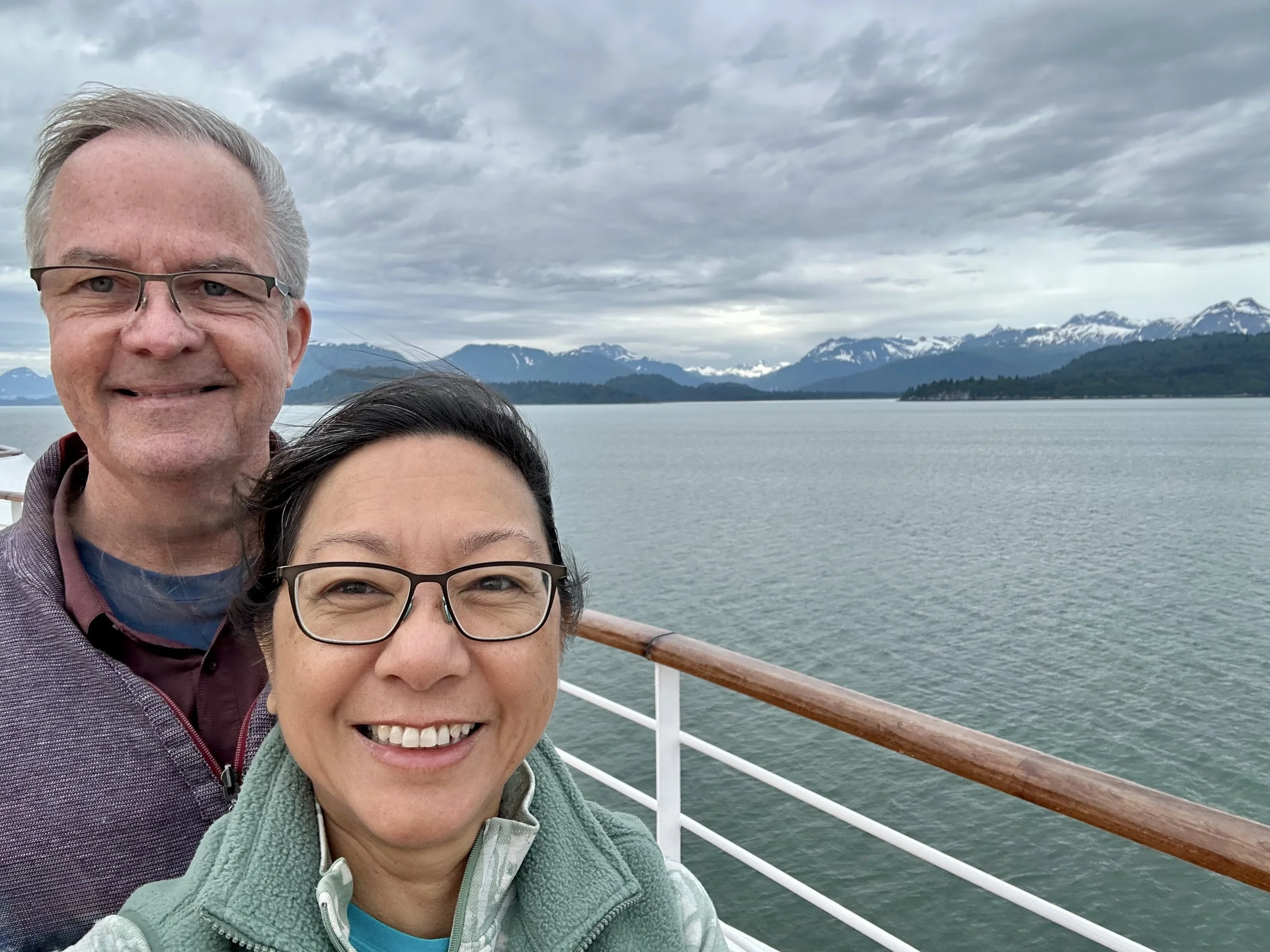
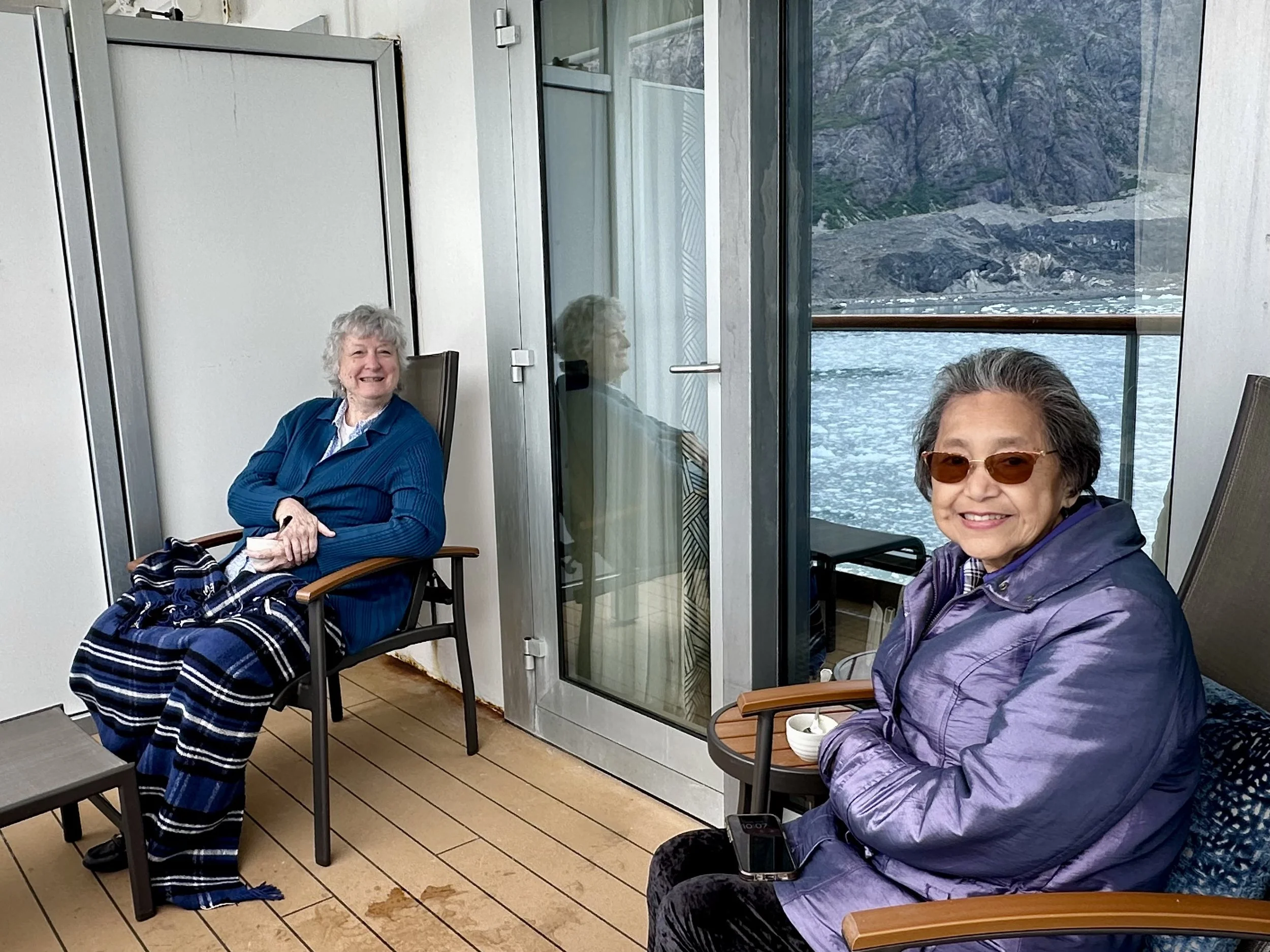
At a place called Gloomy Knob, the park rangers pointed out coastal brown bears on the beach and mountain goats on the bare rock face, but they were too far away to see without binoculars. As we cruised the bay, we did see other wildlife from our balcony: two harbor seals and a raft of sea otters!
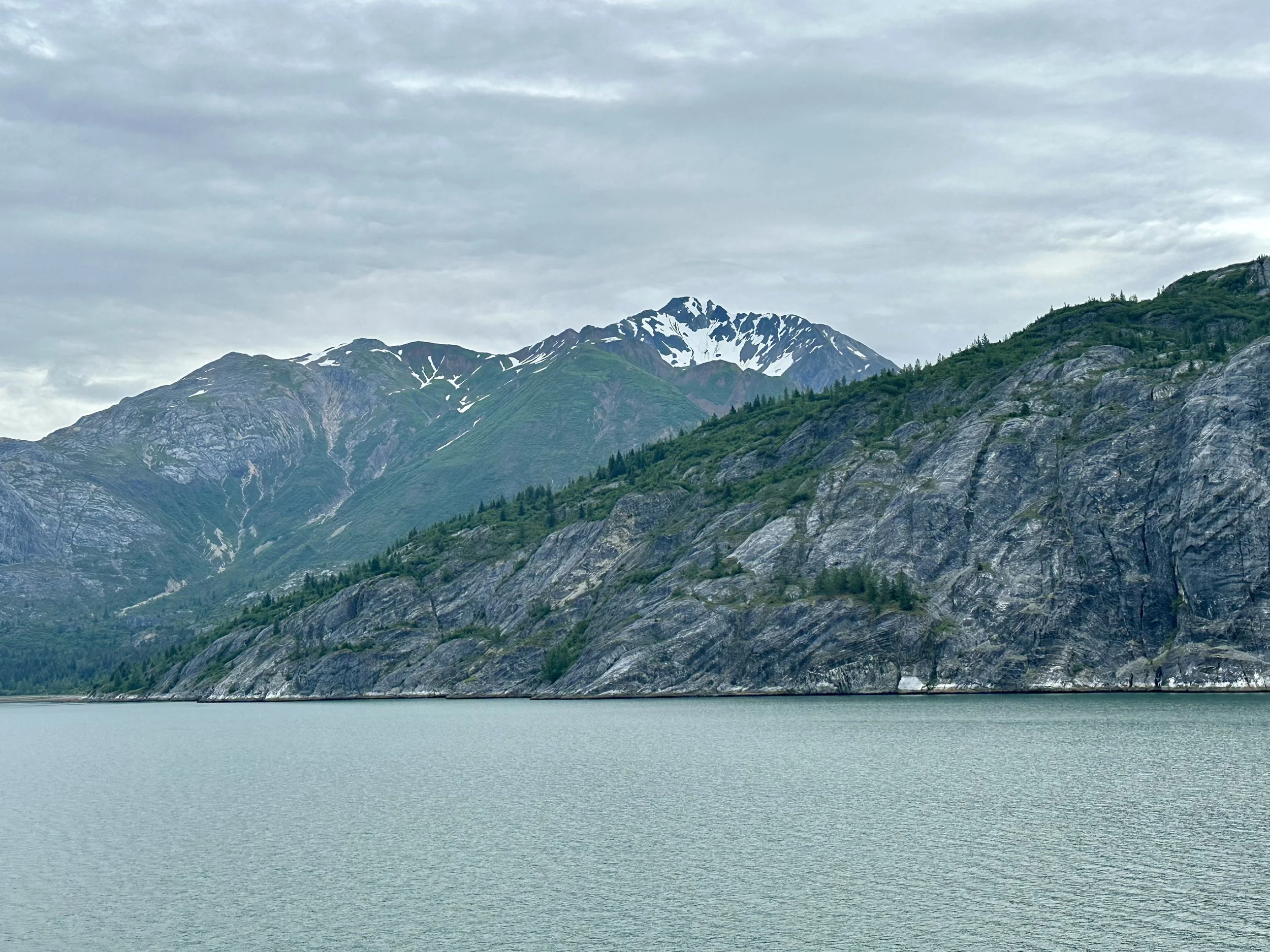
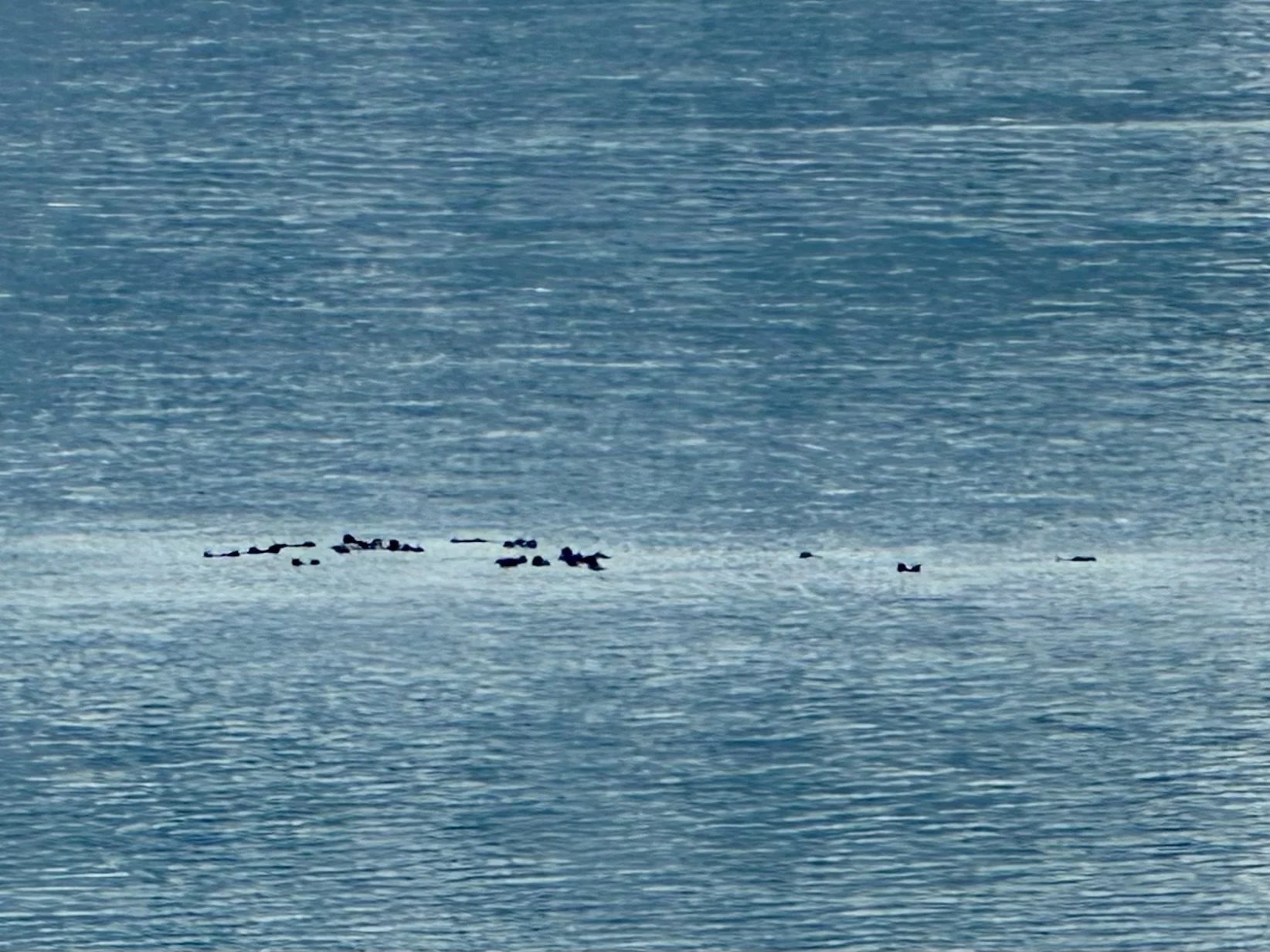

It was also fun to watch the sea ice. Blue “bergy bits” floated serenely, while sheets of slushy “drift ice” moved with the swirling water currents. The ice made a surprisingly loud popping and crackling sound! (Watch the video with sound on.)
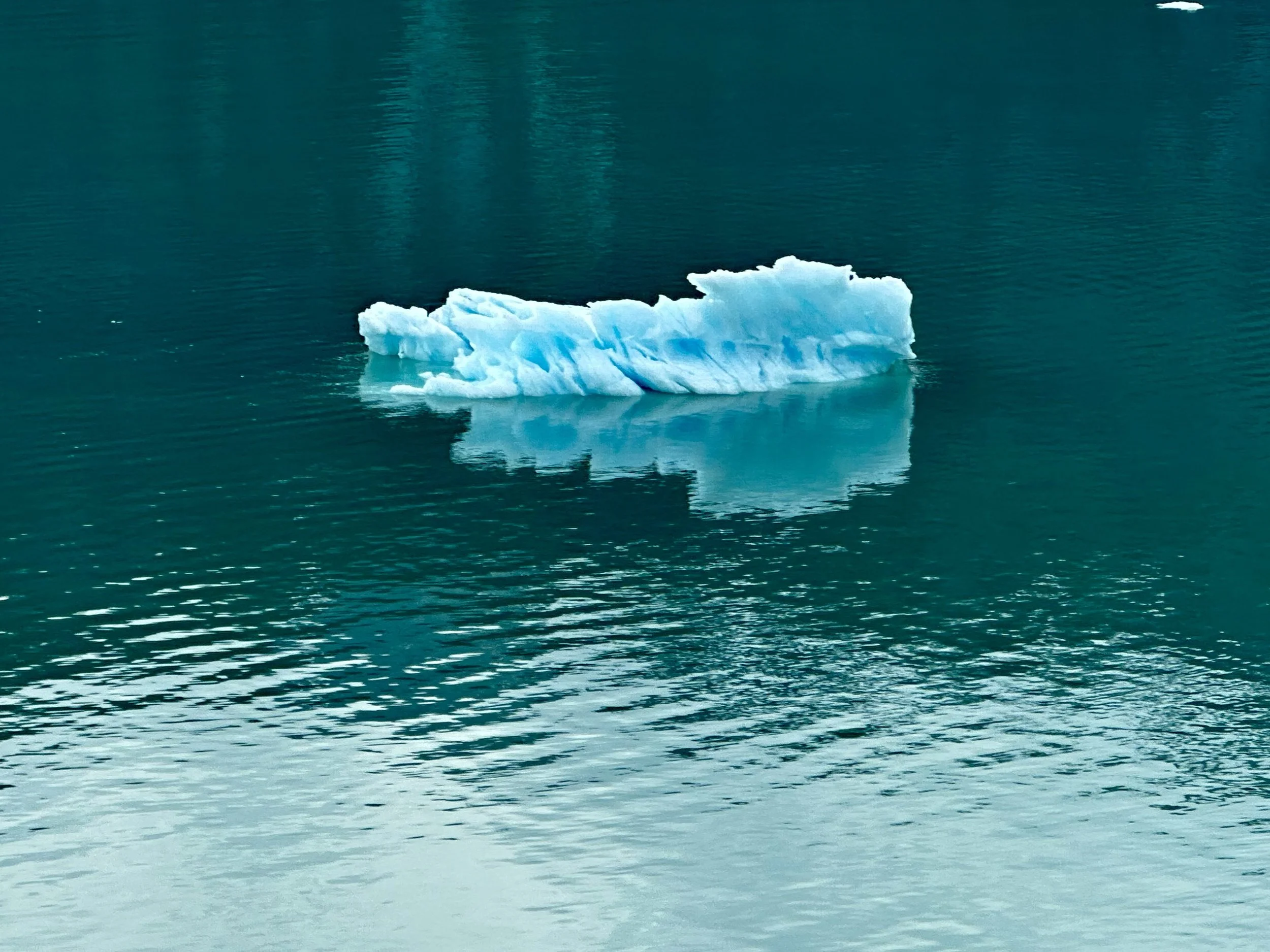
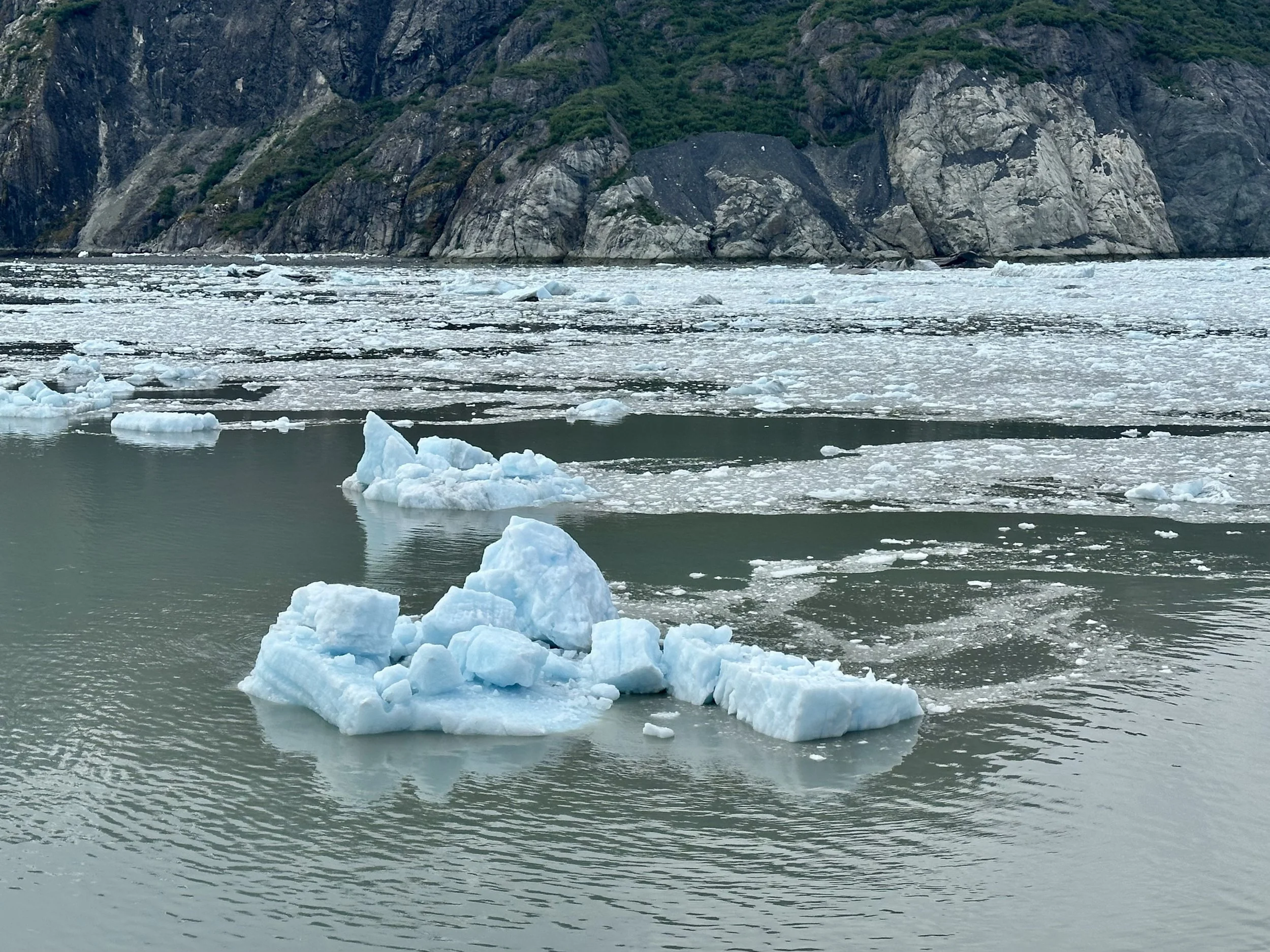
When we reached the end of the bay, the ship stopped for 30 minutes, then rotated 360° and stopped for another 30 minutes. This gave the balconies on both sides of the ship a good view of the “tidewater” glaciers (the ones that reached the water).
Margerie Glacier was the star of the show, a winding river of pale blue ice. It calved a few times, and we ooh-ed every time chunks of ice fell into the sea. We had been told that it was hard to grasp the scale of things here in Glacier Bay. I would never have guessed that the face of Margerie Glacier was two hundred feet high and one mile wide at the water line, and that we were viewing it from just one mile away!
Next to Margerie Glacier, at the far northern end of the bay, was the Grand Pacific Glacier. We might have missed it if we hadn’t known to look for it, as the ice was covered with a thick layer of brown rock debris. But it was the Daddy glacier, responsible for gouging out the deep valley that became Glacier Bay.

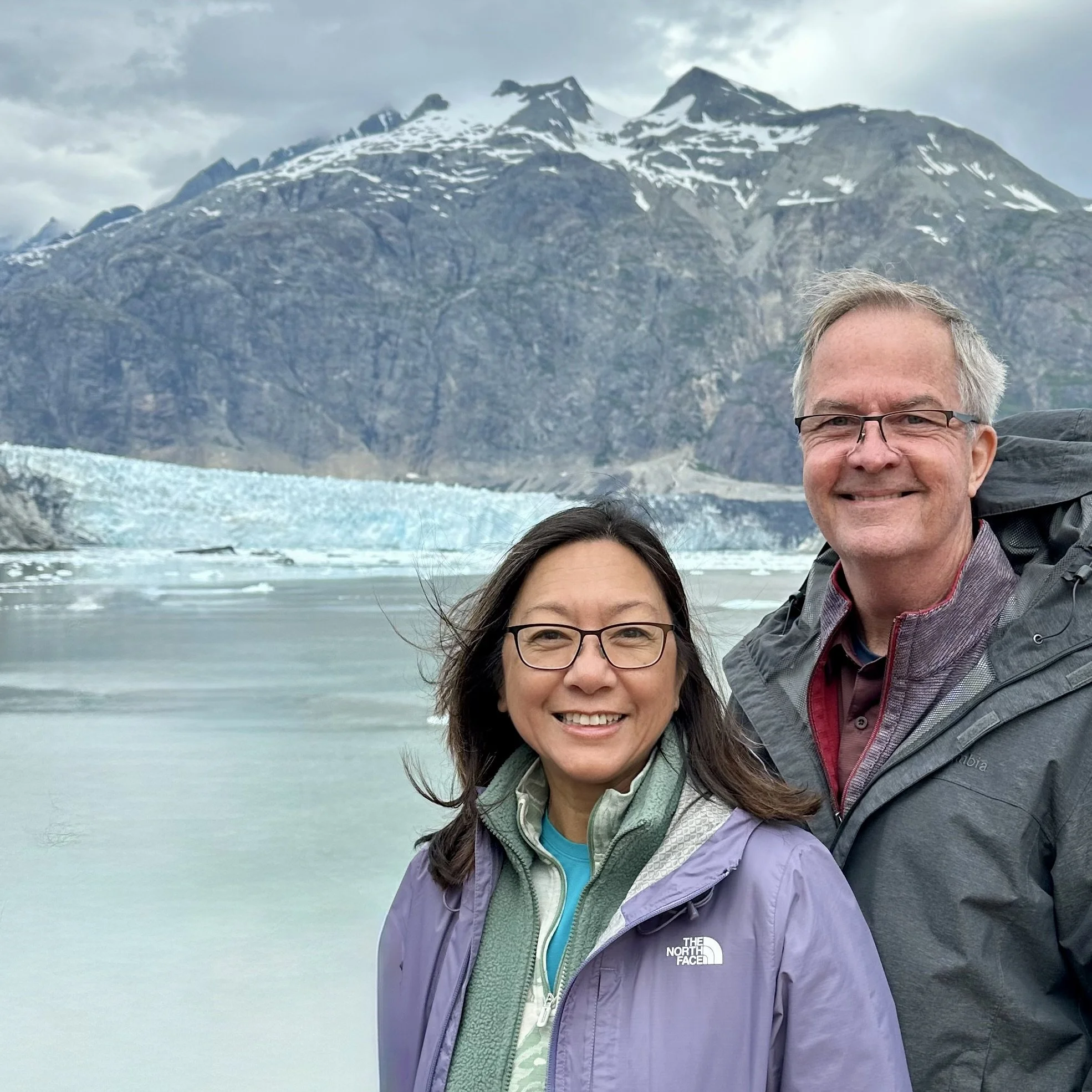
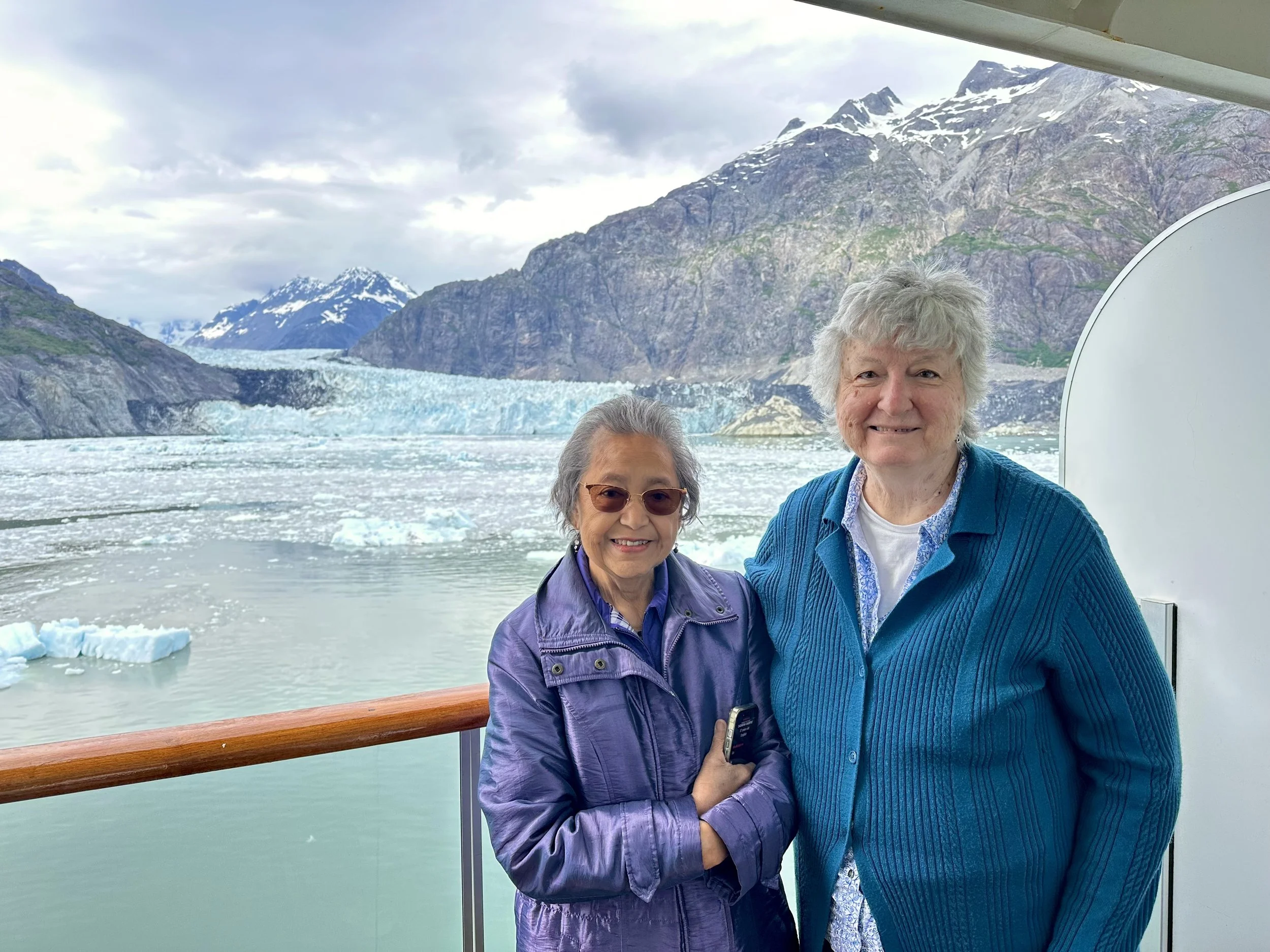
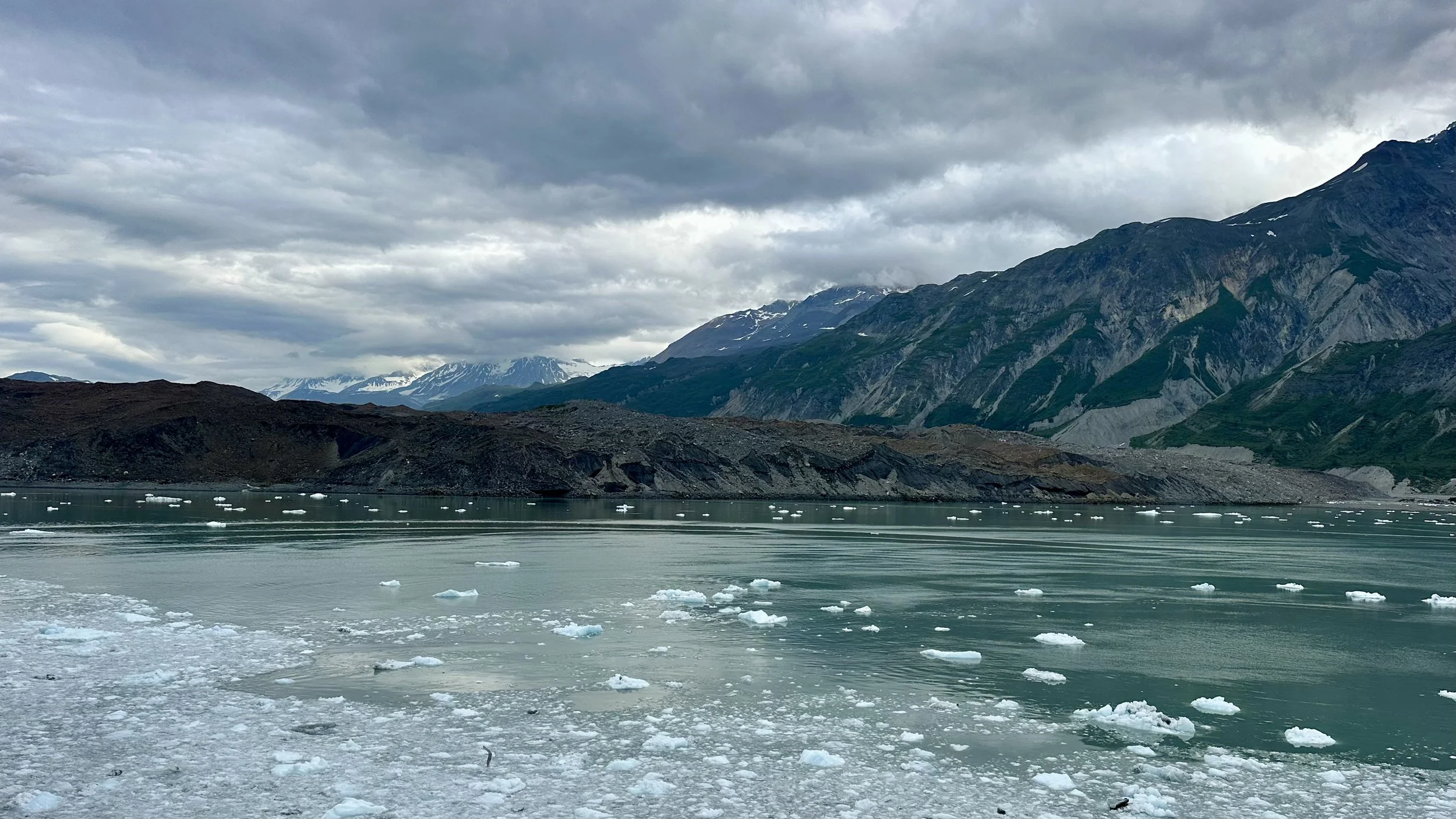
The Eurodam began its southward trip back to the park entrance, and it grew foggy. We saw another tidewater glacier called Lamplugh. We were not able to approach the Johns Hopkins Glacier because the inlet was off-limits that time of year, to protect the baby harbor seals. (They needed time to grow enough blubber to survive the frigid water.) Now we could enjoy seeing the other side of Glacier Bay from our balcony. Even with the fog, it was a spectacular view.

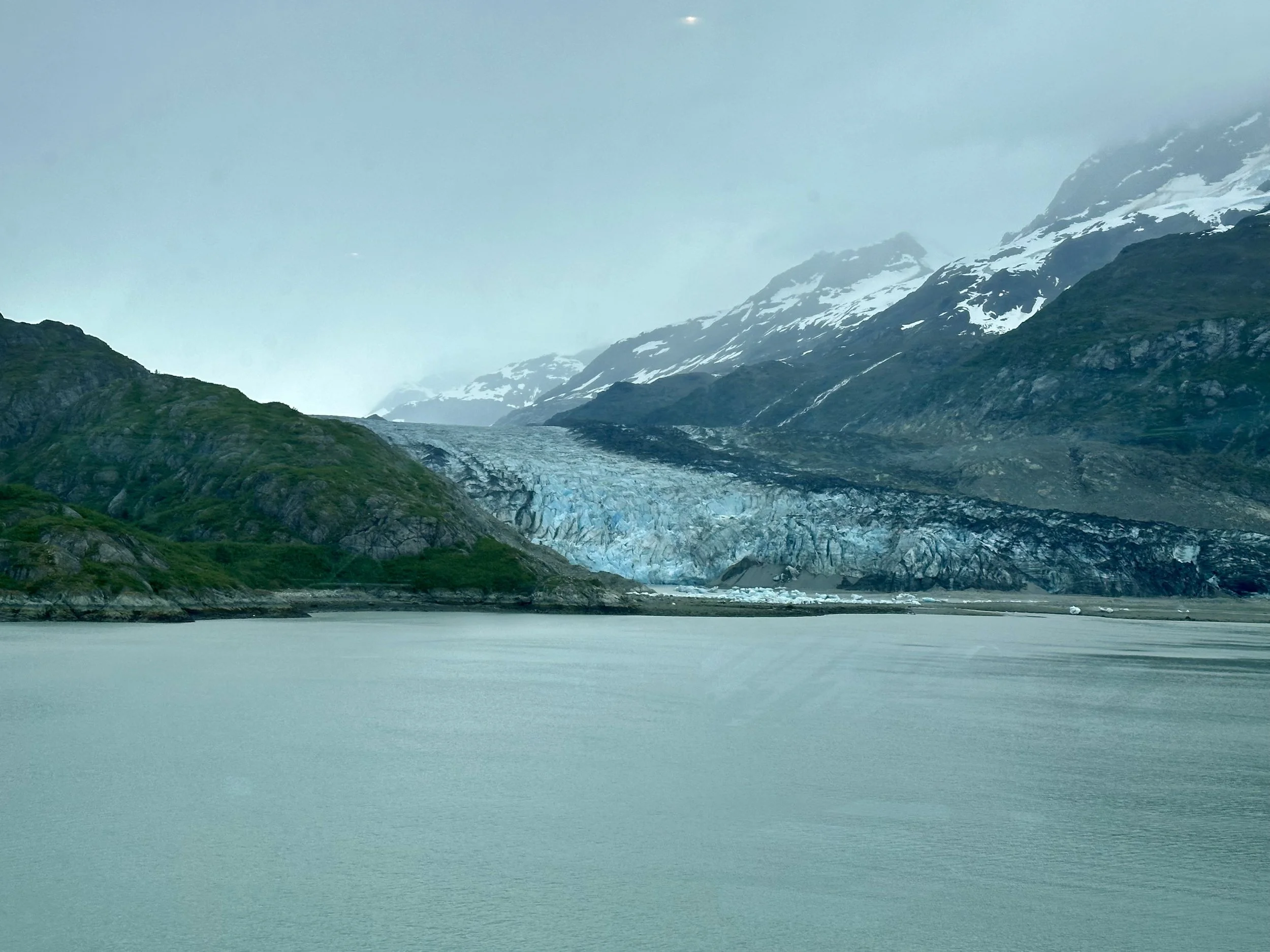

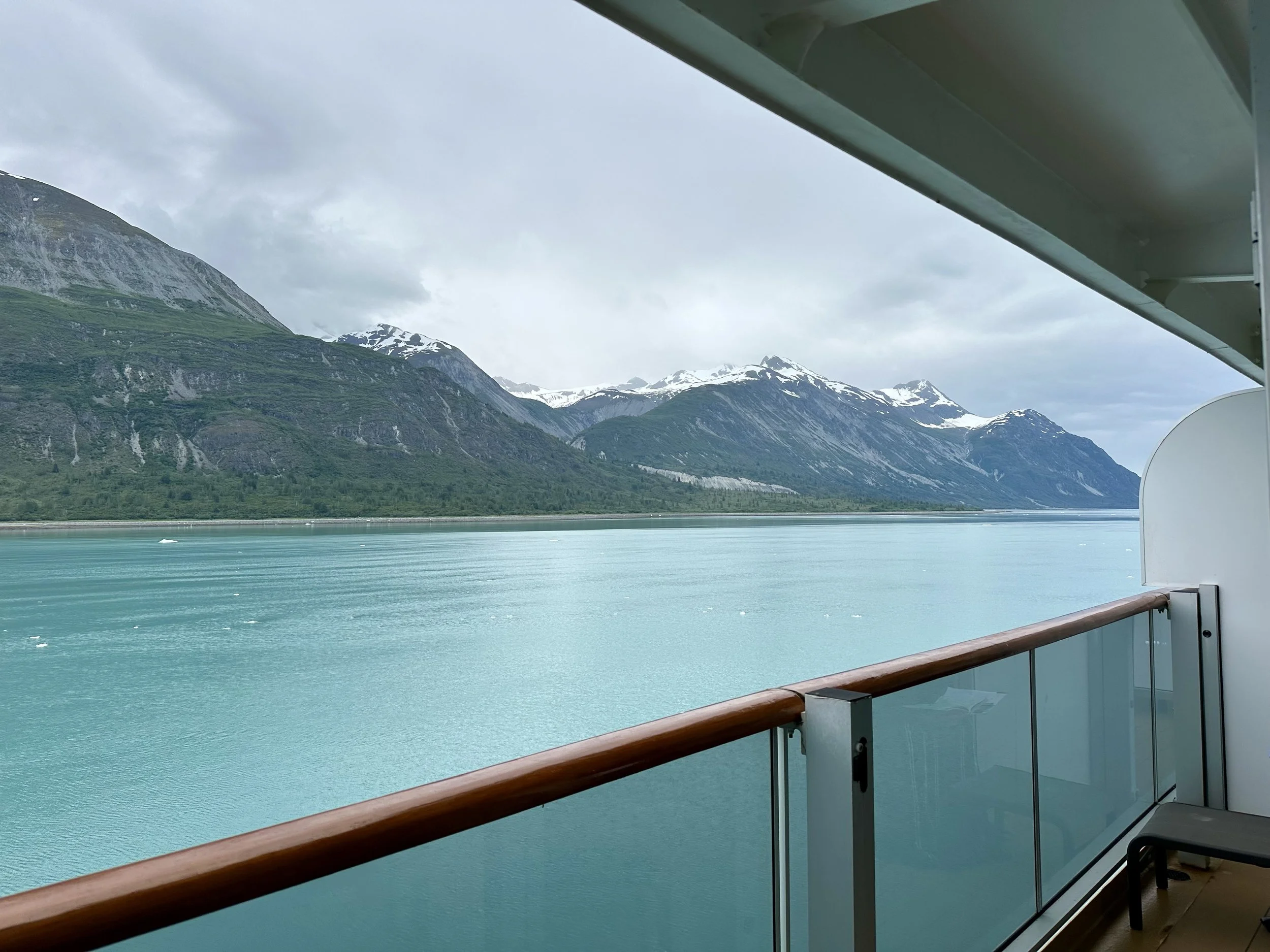
We left Glacier Bay National Park with a lingering sense of awe. I never thought I would see so many magnificent glaciers in one place. They were reminders of the ancient Ice Age and the power of ice to carve out rock. But the planet is growing warmer, and the glaciers are retreating. We wondered what our children’s children might see a few decades from now in Glacier Bay.
Parting Shot
A passenger on the Royal Princess, the only other ship that visited Glacier Bay that Day, took this photo as they passed our ship. Lookin’ good, Eurodam!
